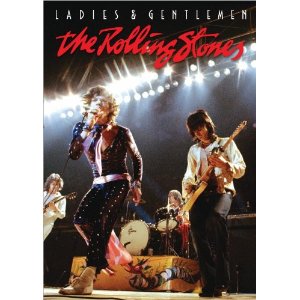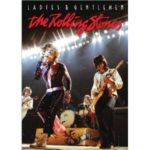
Eagle Vision
In 1972, The Rolling Stones embarked on their first American tour in three years, playing arenas around the country in support of their landmark album, Exile on Main Street. The band was arguably at their creative peak, so a film crew was hired to document four of their shows in Ft. Worth and Houston. The footage was edited down into a 90 minute feature and then sold to an investment group, who distributed the film in 1974 by “four-walling,” a process of renting one theater in a major city and then taking all proceeds from the box office. This unique process was chosen primarily because film screenings required an expensive quadraphonic sound system and a sound engineer who would provide a live mix specific to the number of people in attendance at the movie theater. Although the feature was a critical success, hailed at the time as “the most powerful rock film ever made,” the entire four-wall process was too elaborate to be profitable. Following the limited four-wall release, the film was purchased for major theatrical release without the benefit of quadraphonic sound. After that release, the film was essentially shelved until the band purchased it back in the early 1990s, and now it finally comes to DVD.
The quadraphonic process has been remixed for two-channel Dolby Digital, Dolby Digital 5.1, and DTS digital surround sound formats, and while the sound quality is mostly good, there are a few moments when it is evident that the ravages of time were not kind to the audio recordings. The film begins with a few minutes of a black screen while ambient noise from the crew in the arena slowly increases. In the original theatrical release, this opening often took moviegoers by surprise, as they did not realize the film had begun until seeing the band on the stage. Of course, the surprise is lost on DVD.
Visually, the film looks very much of its era with lots of classic 1970s extreme close-ups, almost no mastershots, and frequent moments when performers drift in and out of frame. These concerts were clearly not lit with film in mind, as the lighting tends to be filled with moody hues and a good deal of darkness. It’s no surprise that the editor focuses primarily on Mick Jagger and secondarily on Keith Richards with the far less animated rest of the band largely getting the shaft. Jagger even makes multiple futile attempts to get the spotlight operator to focus on the soloists instead of himself, and unfortunately, Mick Taylor’s guitar solos are generally ignored by the cameramen.
As far as the performance goes, well, it is rather obvious why the critics loved this film when it was first released. The Rolling Stones are clearly on top of their game here, ripping their way through some of their greatest songs of the period. Augmented by a Texas horn section, “Brown Sugar,” “Bitch,” “Happy,” and “Tumbling Dice” have the perfect amount of raunch and fire, and an acoustic “Sweet Virginia” has an appropriate old-time blues feel. However, it’s the last third of the film where band really ratchets up the intensity. “All Down The Line” is nearly stolen by some particularly nasty slide work
from Taylor, and “Midnight Rambler” is seriously cookin’ as the only song that truly opens up into significant improvisation. Chuck Berry’s “Bye Bye Johnny” is the perfect amped-up vehicle for a Richards and Taylor duel while an unseen Nicky Hopkins cuts loose on the piano. “Rip This Joint” flies along at a speedy pace before the two-fisted finale of “Jumping Jack Flash” and “Street Fighting Man” brings a particularly dirty evening to its menacing conclusion.
Enhanced by clips of the band rehearsing three songs, including the loose “Bluesberry Jam,” as well as archival and current interviews with Jagger, Ladies and Gentlemen The Rolling Stones, is an ideal glimpse of a band at the height of its musical power. There are no elaborate sets or crazy special effects—it’s just The Rolling Stones tearing their way through some phenomenal songs in a performance that rightly justifies their claim as the world’s greatest rock and roll band.



No Comments comments associated with this post